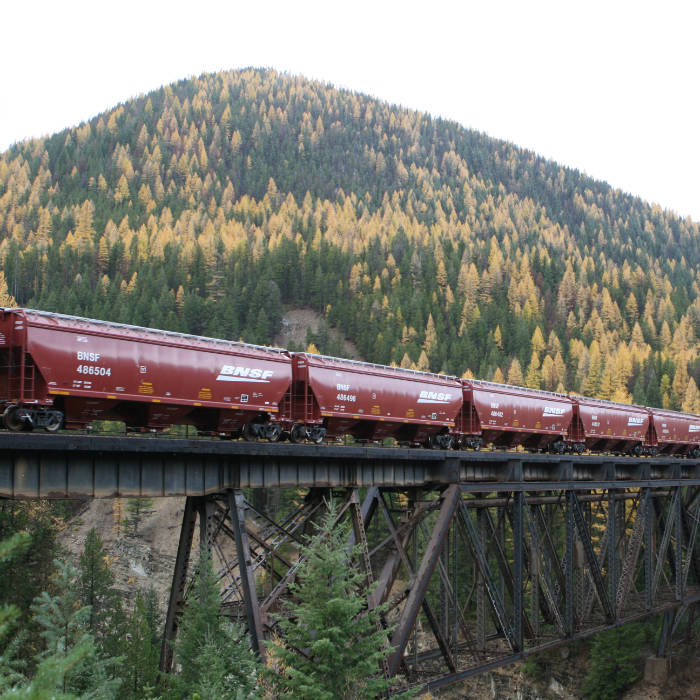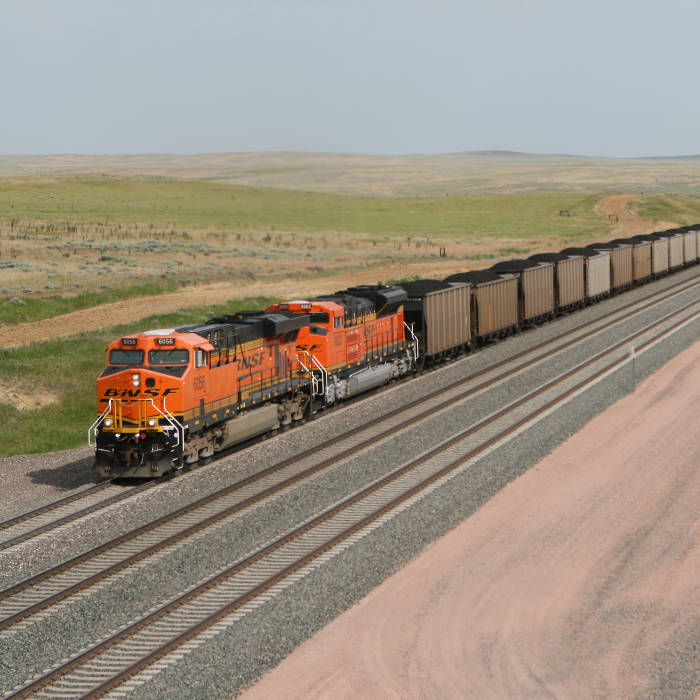
Weighing in at more than 150 tons and equipped with an 11-foot fan that cuts through deep snowdrifts, rotary snowplows play a crucial role in BNSF’s winter action plans.
The slow-moving, snow-throwing rotaries were originally steam powered, debuting in American railroading in the 1880s. Those now in service with BNSF were originally built in the early 1900s for Northern Pacific and the Great Northern railroads and have since been modernized.
Today, we strategically station our rotaries at four key locations near our Northern Transcon route: Glendive, Montana; Minneapolis; and Lincoln and Alliance, Nebraska.
“We generally use the rotary snowplows after dramatic snowfall events where snow volumes are deeper than the height of our typical snowplow blades or in places where we have hills or cuts adjacent to the track that do not allow us to push the snow clear of the path,” said Matthew Hammond, assistant vice president and chief engineer north region, Engineering. “The snowplows work to push snow to either side of the track as a train travels through snowdrift. However, snowpack in flatter landscapes will build up high enough to where this method becomes ineffective. That’s when our rotary snowplows become invaluable.” Read more here!



